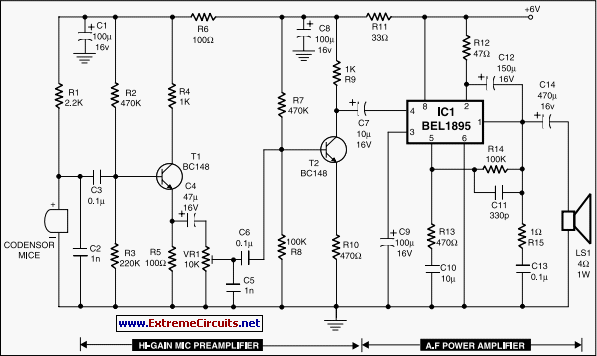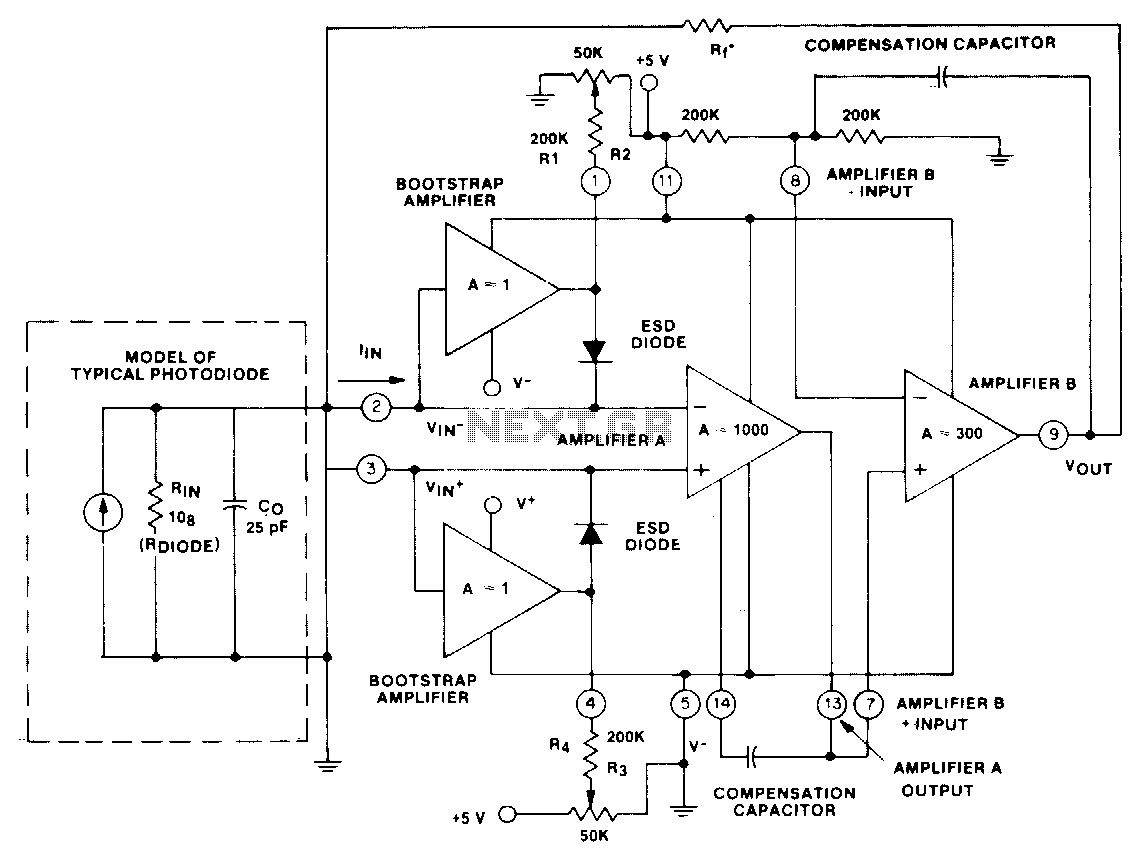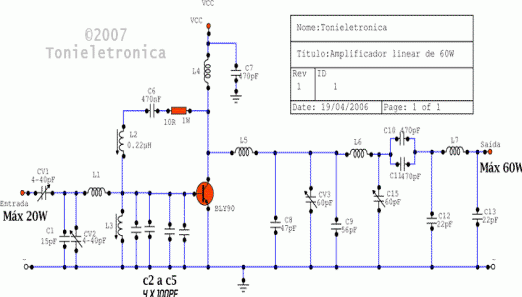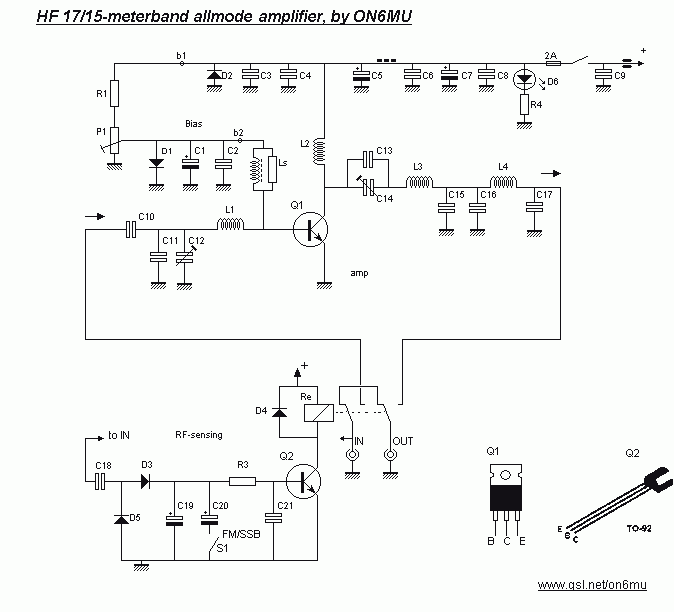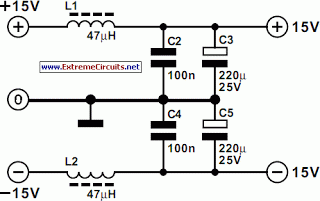
LM359 Fast Photodiode Amplifier

A photodiode can be utilized for high-speed digital transmission; however, it is necessary to provide a high-speed signal conditioner for this purpose. The amplifier circuit...
A photodiode is a semiconductor device that converts light into electrical current. In high-speed digital transmission applications, photodiodes are preferred due to their rapid response times and ability to detect fast-changing light signals. To achieve optimal performance, a high-speed signal conditioning circuit is essential. This circuit typically includes an amplifier designed to enhance the signal received from the photodiode.
The amplifier circuit usually consists of a transimpedance amplifier (TIA) configuration, which converts the photodiode's output current into a voltage signal. The choice of components in the amplifier circuit, such as operational amplifiers with high bandwidth and low noise characteristics, is crucial to maintain signal integrity. Additional components like resistors and capacitors are employed to set the gain and bandwidth of the amplifier, ensuring that it can handle the frequency range of the digital signals being transmitted.
In summary, while photodiodes are effective for high-speed digital communication, the incorporation of a well-designed signal conditioning amplifier is vital for achieving reliable and efficient data transmission. Proper attention to the amplifier's design parameters will ensure that the system operates effectively within the desired specifications.Photo-diode can be used for high speed digital transmission, but you have to provide high speed signal conditioner for that purpose. The amplifier circuit.. 🔗 External reference
A photodiode is a semiconductor device that converts light into electrical current. In high-speed digital transmission applications, photodiodes are preferred due to their rapid response times and ability to detect fast-changing light signals. To achieve optimal performance, a high-speed signal conditioning circuit is essential. This circuit typically includes an amplifier designed to enhance the signal received from the photodiode.
The amplifier circuit usually consists of a transimpedance amplifier (TIA) configuration, which converts the photodiode's output current into a voltage signal. The choice of components in the amplifier circuit, such as operational amplifiers with high bandwidth and low noise characteristics, is crucial to maintain signal integrity. Additional components like resistors and capacitors are employed to set the gain and bandwidth of the amplifier, ensuring that it can handle the frequency range of the digital signals being transmitted.
In summary, while photodiodes are effective for high-speed digital communication, the incorporation of a well-designed signal conditioning amplifier is vital for achieving reliable and efficient data transmission. Proper attention to the amplifier's design parameters will ensure that the system operates effectively within the desired specifications.Photo-diode can be used for high speed digital transmission, but you have to provide high speed signal conditioner for that purpose. The amplifier circuit.. 🔗 External reference
